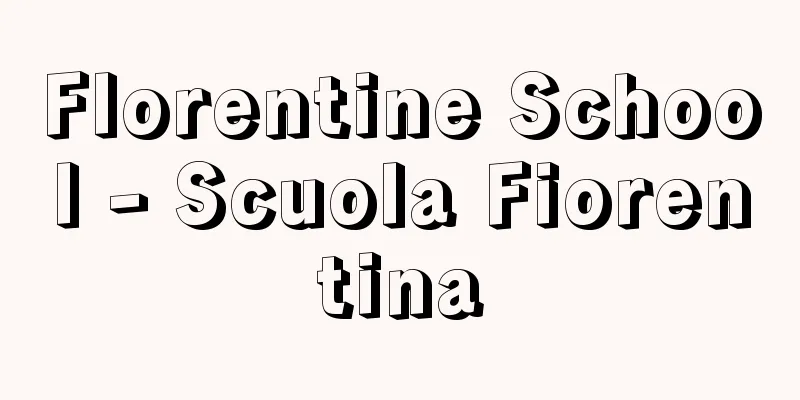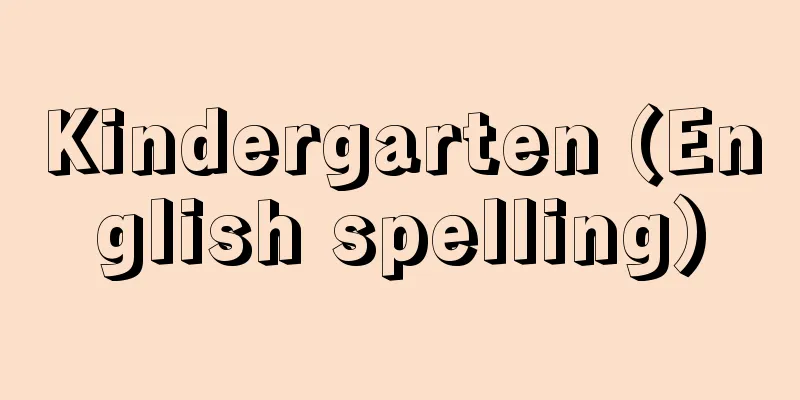Florentine School - Scuola Fiorentina

|
The name used for paintings in Florence, Italy, from the late 13th century to the mid-16th century. The term "school," which organizes and classifies historical facts, is often ambiguous, and the term Florentine School does not mean simple stylistic homogeneity or unbroken continuity passed from master to disciple and then to disciple. However, as the young Michelangelo left evidence in his own drawings that he had studied not only Masaccio's works but also those of Giotto, there is a continuation of artistic traditions unique to Florence. And there is a reason to use this term because it is thought that a more vague but more essential commonality can be recognized among the Florentine painters in the above period. The glorious period of Florentine painting began with Giotto in the first half of the 14th century, who broke with traditional medieval painting with his fresh sense of realism. It was Masaccio, the founder of Renaissance painting, who took a similarly determined and bold step in the same direction almost a century later. The architect Brunelleschi had just discovered geometric perspective, which was soon adopted by Masaccio in his murals and by Donatello in his reliefs. The rational and intellectual tendencies of geometric perspective were evident in many Florentine artists. In his book I Communi, the 15th century sculptor Ghiberti listed the necessary academic subjects for artists, including anatomy. It is no coincidence that the artists who are said to have attempted human dissection in the 15th and 16th centuries, namely Antonio Pollaiuolo, Leonardo da Vinci, Michelangelo, and Rosso Fiorentino, were all Florentine artists. In his book Lives of the Artists, the 16th century painter and architect Vasari cited the city's free critical spirit, which encourages artists to compete with each other and is not satisfied with mediocrity, as the factor that makes Florence's art, especially painting, so excellent. In fact, the fact that each artist does not content himself with imitating others but instead seeks his own style with a rich spirit of inquiry is what made Florence the most dynamic art center in Europe for more than two centuries. Thus, in the first half of the 15th century, in addition to Masaccio, Uccello, Fra Angelico, Domenico Veneziano, Castagno, Filippo Lippi and others were active, while in the second half of the century, Pollaiuolo, Baldobinetti, Botticelli, Filippino Lippi and Ghirlandaio were active. Leonardo's period of activity was not much different from Botticelli's. In the 16th century, Michelangelo, Fra Bartolomeo, Andrea del Sarto and others appeared, followed by Mannerist painters such as Rosso Fiorentino, Pontormo and Bronzino, who appeared at the end of Florentine painting. [Shigenori Nishiyama] Probably circa 1320, tempera , Metropolitan Museum of Art Giotto's "Adoration of the Magi" Circa 1470 Copperplate print Paris Museum Antonio Pollaiuolo: "The Nudes" 1475-1485 Tempera ( Collection of the Chicago Art Institute ) Botticelli's "Madonna and Child with Angels" Source: Shogakukan Encyclopedia Nipponica About Encyclopedia Nipponica Information | Legend |
|
13世紀後期から16世紀中ごろまでのイタリアのフィレンツェの絵画に用いられる名称。もともと、歴史的事実を整理・分類する「派」という用語にはあいまいさが伴う場合が多く、このフィレンツェ派という語も、単純な様式的同質性や、師から弟子へ、さらにその弟子へと受け渡される切れ目のない連続性を意味するのではない。しかし、若きミケランジェロがマサッチョの作品のみならず、ジョットの作品をも研究した証拠を自らの素描にとどめているように、フィレンツェに特有な芸術的伝統の継承ということが生ずる。そして、いっそう漠然としてはいるが、より本質的な部分での共通性を上記の期間内のフィレンツェの画家たちに認めうると考えられもするところに、この語を用いる理由がある。 フィレンツェ絵画の輝かしい時代は、その新鮮な現実感覚によって伝統的な中世絵画と決別する14世紀前半のジョットをもって始まる。このジョットの進めた方向に同様な決然たる態度でさらにたくましい一歩を踏み出したのは、ルネサンス絵画の創始者たる、ほぼ1世紀後のマサッチョであった。おりしも建築家ブルネレスキは幾何学的遠近図法を発見し、これはマサッチョの壁画やドナテッロの浮彫りにただちに採用されることになる。幾何学的遠近図法にみられる合理的、知的傾向はフィレンツェの美術家の多くに認められる。15世紀前期の彫刻家ギベルティは自著『イ・コムメンタリイ』のなかで、美術家に必要とされる学問を列挙し、そのなかに解剖学をあげているが、15、6世紀に人体解剖を試みたと伝えられる美術家たち、すなわちアントニオ・ポライウオーロ、レオナルド・ダ・ビンチ、ミケランジェロ、ロッソ・フィオレンティーノらがいずれもフィレンツェの美術家であるのは偶然ではあるまい。16世紀の画家・建築家バザーリは著書『美術家列伝』のなかで、フィレンツェ美術、わけても絵画を優秀ならしむる要因として、美術家たちが互いに切磋琢磨(せっさたくま)するよう促すところの、凡庸なものに満足しないこの都市の自由な批判精神をあげている。事実、美術家個々人が他人の模倣に甘んぜず、豊かな探求心をもって自己のスタイルを求めてゆくところにこそ、フィレンツェをして2世紀以上にもわたってヨーロッパのなかのもっとも活力ある美術の中心とした原因がある。 かくて、15世紀前半には、マサッチョのほかに、ウッチェロ、フラ・アンジェリコ、ドメニコ・ベネチアーノ、カスターニョ、フィリッポ・リッピらが、世紀の後半になるとポライウオーロ、バルドビネッティ、ボッティチェッリ、フィリッピーノ・リッピ、ギルランダイヨらが活躍する。レオナルドも活動期はボッティチェッリとあまり変わらない。16世紀にはミケランジェロ、フラ・バルトロメオ、アンドレア・デル・サルトらが現れ、ついで、ロッソ・フィオレンティーノ、ポントルモ、ブロンツィーノといったマニエリスムの画家がフィレンツェ絵画の最後に登場する。 [西山重徳] おそらく1320年ころ テンペラメトロポリタン美術館所蔵"> ジョット『東方三博士の礼拝』 1470年ころ 銅版画ParisMusées"> アントニオ・ポライウオーロ『裸人たちの… 1475~1485年 テンペラシカゴ美術研究所所蔵"> ボッティチェッリ『聖母子と天使』 出典 小学館 日本大百科全書(ニッポニカ)日本大百科全書(ニッポニカ)について 情報 | 凡例 |
<<: Philokalia (English spelling)
Recommend
exceptio
…This is called a permanent or extinguishable def...
Katsura School - Katsura
〘Noun〙 A school of metalwork. Its founder was Kats...
Aura Regia - Aura Regia
…Only the hot baths remain in their original form...
al-Ḍabbī (English spelling)
?-1203 A 12th-century Andalusian scholar. Much abo...
Karen - Karen (English spelling)
An ethnic group that straddles the border between...
frog
…A general term for amphibians belonging to the o...
Dulcin - Dulcin (English spelling)
A derivative of urea. It is also called scroll or...
Fish Market - Uoichi
〘 noun 〙 A market where fish, salt mixtures, etc. ...
"Minamata disease as medicine" - Minamata disease as medicine
Currently, most of the "documentaries" ...
Laterite (English spelling)
A soil rich mainly in iron and aluminium. The term...
Construction - Gofushin
Civil engineering works carried out by the shoguna...
catch
〘noun〙 (catch)① (━suru) To catch (radio waves, inf...
Kasuga pilgrimage - Kasuga pilgrimage
〘 noun 〙 A pilgrimage to Kasuga Taisha Shrine in N...
General birth rate - Ippanshūsseiritsu
...However, in reality, the denominator P does no...
Ganges [River] - Ganjisu
…A holy river in India. It is also known as the G...









